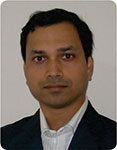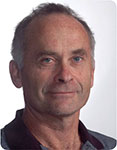Tectono-sedimentary evolution and source rock distribution of the mid to Late Cretaceous succession in the Great South Basin, New Zealand
Tusar Sahoo A , Peter King A , Kyle Bland A , Dominic Strogen A , Richard Sykes A and Francois Bache AGNS Science
The APPEA Journal 54(1) 259-274 https://doi.org/10.1071/AJ13026
Published: 2014
Abstract
The Great South Basin, off New Zealand’s southeast coast, has attracted renewed exploration interest from major petroleum companies since 2005. The distribution of the mid Cretaceous to Paleocene source rocks (coals and coaly mudstones) is a critical component in evaluating basin prospectivity. This paper delineates source rock distribution from seismic facies characterisation, and presents a series of updated paleogeographic maps over the initial (Cretaceous) phases of basin evolution.
Basin evolution has been analysed from mapped sequence stratigraphic boundaries and isochron maps. Seismic facies were characterised based on the amplitude, continuity, and stacking pattern of the reflection packages. The identified facies were calibrated with well data for age, gross lithology, and gross depositional environment. Areas of source rock deposition were demarcated using seismic attribute interval maps, from which a series of updated paleogeographic maps was prepared.
Four second-order sequences have been identified within the Cretaceous succession. The lower two sequences are mainly fault bounded and were deposited in a syn-rift phase. In contrast, the upper two sequences reflect a change in basin character from rifting to a post-rift thermal sag phase. Source facies within both the syn- and post-rift sequences were deposited in mainly non-marine to marginal marine settings, although there is also the possibility of lacustrine source rocks in isolated syn-rift depocentres. The wide geographic spread of source rock intervals within the Cretaceous sequences allows for a variety of petroleum generation and exploration play scenarios.

Tusar R. Sahoo is a seismic interpreter in the Petroleum Geoscience Department at GNS Science. He has a MSc in applied geology and MTech in petroleum exploration from the Indian School of Mines. After completing his MTech degree he joined Reliance Industries Limited in India as a geoscientist and was involved in the evaluation of hydrocarbon prospectivity of different basins in India. He joined GNS Science in 2012, and has been focusing on seismic facies mapping, paleogeography, and distribution of petroleum system elements in the southeast frontier basins of New Zealand. He leads a 3D seismic attribute analysis project in GNS Science. His main research interests are in understanding distribution of source, reservoir, and seal rocks and evaluating hydrocarbon potential of New Zealand basins. t.sahoo@gns.cri.nz |

Dr Peter R. King graduated with BSc and MSc (Hons) degrees from the University of Waikato in 1978, and started his career with Shell International in Holland and Oman. He has since worked as a government geoscientist in New Zealand, firstly in the NZ Geological Survey, DSIR (1984–1992), and thereafter in the successor Crown Research Institute, GNS Science, where he is presently a Principal Scientist and leader of the Petroleum Basin Research programme. He is the lead author of two monographs on the Taranaki Basin, and has published extensively on a variety of aspects of sedimentary basin evolution in New Zealand. He has been honoured for this work with a DSc degree (University of Waikato) and a Science and Technology Bronze Medal (Royal Society of NZ). Member: NZ Geosciences Society and AAPG. p.king@gns.cri.nz |

Dr Kyle J. Bland is a petroleum geologist at GNS Science, where he has worked since 2007 after gaining his PhD at the University of Waikato. Kyle leads the New Zealand Government-funded Frontier Basins taskforce research project. Kyle’s present research work includes developing a better understanding of the petroleum potential of regions outside of Taranaki, and creating updated paleogeographic reconstructions of eastern and central New Zealand. Kyle has also been involved with regional-scale geological assessments of the potential for underground storage of CO2 in Taranaki, Wanganui, East Coast, and south-western South Island sedimentary basins. Member: AAPG. k.bland@gns.cri.nz |

Dr Dominic P. Strogen is a sedimentologist in the Petroleum Geoscience Department at GNS Science working primarily within the Petroleum Basin Research programme, focusing on seismic facies mapping, paleogeography and reservoir sedimentology and petrography. Prior to joining GNS in 2008, Dominic lead petroleum industry-funded research at CASP (Cambridge, UK) into the basin evolution of the East Greenland-Mid Norway region, as well as being involved in field-based research efforts in Libya, Arctic Canada, and Iran. Dominic has research interests in clastic sedimentology, basin evolution, and diagenesis. d.strogen@gns.cri.nz |

Richard Sykes (MSc) is a Principal Scientist and petroleum geochemist at GNS Science in Lower Hutt where he leads government-funded research and undertakes commercial consultancy work on petroleum source rocks and fluids. He is presently programme leader of the Petroleum Source Rocks and Fluids research programme. He is also an adjunct lecturer on petroleum source rocks and fluids at Victoria University of Wellington. His main research interests are in understanding the formation and inter-relationships of coaly source rocks and their oil and gas products and applying that knowledge in exploration and appraisal. Member: EAOG, ICCP and TSOP. r.sykes@gns.cri.nz |

Francois Bache is a senior geoscientist in the Marine Geoscience Department at GNS Science. He has a PhD in marine geology from the University of Brest, France. Francois specialises in seismic stratigraphy and has papers published about various topics and geographical areas, including New Zealand, Mediterranean Basin, Sultanate of Oman, and Bolivia. He leads the GNS Science regional structure and tectonic history of Zealandia Project where he has worked since 2010. His interests include basin-scale analysis, subduction initiation, and frontier basin exploration. f.bache@gns.cri.nz |


